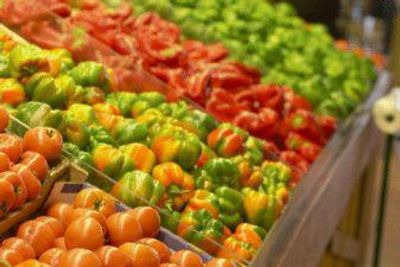If you or someone close to you were recently diagnosed with diabetes or prediabetes, chances are you have a lot of questions about what you should eat. You may falsely think that you need to eliminate all sugar from your diet, but before you panic, let's take a look a brief look at some dietary guidelines for people with diabetes or prediabetes.
First, there is no such thing as a diabetes diet. There are no foods that are completely off limits for most people. Gone are the days when the only rule for people with diabetes was to avoid sugar. Now, it's more about eating foods that help you maintain steady blood sugar levels and lower your risk for heart disease and other illnesses that are more likely to occur if you have diabetes. Essentially, focus on moderation, eating plenty of fruits and vegetables and keeping track of your carbohydrates.
That doesn't mean you can eat everything in sight and still stay healthy. There are foods and ways to prepare them that will help keep your diabetes symptoms under control and will help lower your risk of cardiovascular disease, high blood pressure, certain cancers and other ailments for which you are at higher risk as someone with diabetes.
If you are overweight or obese, even a modest weight loss of 5 percent to 10 percent can significantly improve your glucose control. With prediabetes, weight loss and following a healthy diet can help you avoid getting diabetes.
Regular physical activity also is important for diabetes management. Experts recommend at least 30 to 60 minutes a day of moderate-intensity activity for at least five days per week; if you're trying to lose weight, aim for 60 to 90 minutes at least five days a week.
As for diet, the main thing to remember with diabetes is carbohydrate control. Your total daily intake of carbohydrates should be at least 130 grams per day, ideally 40 percent to 45 percent of your total caloric intake, according to guidelines from the Joslin Diabetes Center. If you regularly take medication or insulin for your diabetes, it's helpful to maintain meal-to-meal consistency in distributing your carbohydrates throughout the day.
What does this mean? It means you still need to eat plenty of carbs, which contain sugars, but you also need to become educated about selecting foods with a low glycemic index, which is a system of ranking how quickly certain carbohydrate-containing foods raise your blood glucose levels. Foods with a low glycemic index will raise your glucose levels more slowly and help your body stay on a more even keel.
So what are some of these foods? Primarily, they are vegetables, fruits, legumes and whole or minimally processed grains. The carbohydrates with high glycemic loads, which you want to avoid, are things like processed foods and refined grains—things like white rice, regular pasta, white bread and sugary low-fiber cereals. You also want to avoid things that are loaded with sugar—sodas, sweetened tea or coffee drinks, sweetened juices, dried fruits, desserts and candy. Some starchy vegetables also are high-glycemic foods, such as potatoes and corn.
The more fiber a food contains, the less quickly your blood sugar will react. That's why it's important to eat plenty of high-fiber unprocessed foods, such as vegetables, fruits, seeds, nuts and legumes.
If you have diabetes or prediabetes, it's also crucial to monitor the types of fat you consume. Try to limit your total fat intake to less than 35 percent of your total caloric intake. But, more important, concentrate on the types of fat you eat.
Focus on monounsaturated and polyunsaturated fats, such as found in olive and canola oils, nuts, seeds, avocado and fish, particularly oily fish like salmon, trout and tuna. Avoid foods high in saturated fats like beef, pork, lamb, high-fat dairy products (whole milk, cheeses and whole-fat yogurt). Also try to avoid trans fatty acids often found in some packaged snack foods, commercially baked goods, fast food and some margarines.
Your daily diet should still include protein, up to 20 percent to 30 percent of your total daily caloric intake, but focus on protein sources that aren't high in saturated fat. Vegetarian sources like nuts, seeds, legumes and tofu are great, but you can also eat fish, skinless poultry, some lean cuts of meat and non-fat or low-fat dairy products. If you have kidney disease along with diabetes, consult with your health care professionals about your recommended protein allowance.
If you're craving something to satisfy your sweet tooth, try a dessert-flavored low-fat or nonfat yogurt, like chocolate or key lime pie. If only real chocolate will do, have a 1-ounce Dove Dark Chocolate Bar with a GL of 4 or 1 ounce of peanut M&Ms (about 25 pieces) with a low glycemic load (GL) of 5.
A registered dietitian or nutritionist can be a valuable member of your diabetes care team. Ask your health care provider if you can get help with your nutrition planning. There are also plenty of online resources and apps to help you eat healthy and count your carbs.
If you are planning holiday meals for someone who has diabetes, click here for more ideas.
Glycemic Load: Low Is Good
Eat primarily foods with a low glycemic load (GL=10 or less) or a moderate glycemic index (GL=11-19)
Note: The glycemic load applies the glycemic index to a standard serving of food. Seafood, poultry and meats do not have a glycemic load because they do not contain carbohydrates.
| Food | Serving Size | GL |
| Broccoli | 1/2 cup | 0 |
| Cauliflower | 1 cup | 0 |
| Green beans, raw | 1 cup | 0 |
| Spinach | 1 cup | 0 |
| Almonds | 1/3 cup (1.5 ounces) | 0 |
| Peanuts | 1/3 cup (1.5 ounces) | 1 |
| Plum | 1 average | 2 |
| Nutella spread | 2 tablespoons | 2 |
| Carrots | 1 large | 3 |
| Cherries | About 16 (4 ounces) | 3 |
| Cashews | 1/4 cup (1 ounce) | 3 |
| Peas, frozen | 1/2 cup | 3 |
| Pear | 1 small | 4 |
| Mixed nuts, roasted | 1/3 cup (1.5 ounces | 4 |
| Skim milk | 1 cup (8 ounces) | 4 |
| Soy milk | 1 cup (8 ounces) | 4 |
| Strawberries | 1 cup | 4 |
| Tomato juice | 6 ounces | 4 |
| Lentils | 1 cup | 5 |
| Orange | 1 small | 5 |
| Peach | 1 small | 5 |
| Apple | 1 small | 6 |
| Wheat tortillas | 2 (6-inch) | 6 |
| Yogurt, plain | 1 cup | 6 |
| Ice cream (regular) | 1/2 cup | 6 |
| Navy beans | 1 cup | 7 |
| Lima beans | 1 cup | 7 |
| Grapes | 1 cup | 7 |
| Cantaloupe | 1 cup | 8 |
| Popcorn | 2 cups | 8 |
| Apple juice | 6 ounces | 8 |
| Graham crackers | 2 squares | 8 |
| Whole-grain pumpernickel bread | 2 slices | 10 |
| Oatmeal (instant) | 1 ounce (1 cup prepared) | 10 |
| Corn tortillas | 2 (6-inch) | 11 |
| Angel food cake | 1 slice (28 grams) | 11 |
| Chocolate milk (low-fat) | 1 cup (8 ounces) | 12 |
| Stone-ground wheat thins | 4 | 12 |
| Whole-wheat or high-protein pasta | 1 cup | 12-13 |
| Bran flakes | 3/4 cup | 13 |
| Cheerios | 1 cup (1 ounce) | 13 |
| Whole-grain bread | 2 slices | 14 |
| Orange juice | 1 cup | 14 |
| Quinoa | 2/3 cup (cooked) | 16 |
| Converted long-grain white rice | 2/3 cup (cooked) | 16 |
| Spaghetti, whole-wheat, boiled | 1 cup | 16 |
| Spaghetti, white, boiled 5-15 minutes | 1 cup | 17-18 |
| Sweet potato | 1 medium | 17 |
| Cream of wheat, regular | 1 cup (prepared) | 17 |
| Brown rice | 2/3 cup (cooked) | 18 |
| Fruit cocktail, drained | 1 cup | 20 |


